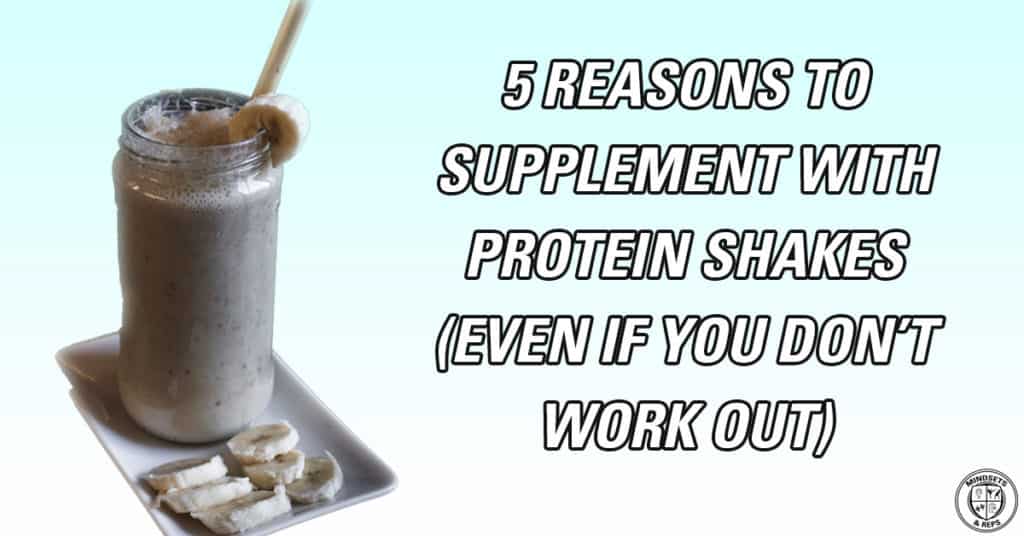
If you were to thumb through an old Muscular Development magazine, you would see advertisements for protein powders sporting huge bodybuilders in the picture. This led people to believe that protein shakes are only appropriate for someone looking to bulk up.
But the application of protein goes beyond just its muscle building capabilities for people who spend hours at the gym. Protein is an essential nutrient; without it the body would go through detrimental changes that affect multiple aspects of daily living.
There is nothing in the typical protein shake that would make someone inherently bigger. It is simply a convenient means to add protein to the diet. Almost anyone can supplement with a protein powder and gain some sort of health benefit from it.
Once people get past the false illustration of protein packing on pounds of muscle in an instant, they’ll realize how beneficial supplementation can be. After all, protein shakes, powders, and bars are now found in every major supermarket chain. Clearly it serves a benefit to the general population, or else they wouldn’t sell it in the first place.
Proteins Make Up Multiple Components of the Body
Structural components of the body are easy to identify. Yes, muscles are made up of protein, but it goes beyond that. Your organs, hair, skin, ligaments, tendons, and nails are made up of protein as well.
Protein is made up of amino acids. Amino acids fall into two basic categories; essential and non-essential. Non-essential amino acids can be made by the body itself. Essential amino acids must be consumed from food and/or supplements.
You may have heard of people using collagen for skin health. Collagen is simply a specific type of protein that is high in three amino acids (hydroxyproline, proline, and glycine) that aid in skin elasticity.
Different protein sources, like meat, fish, and dairy, all have different amino acid profiles. This is why variety and diversity in the diet in important. It ensures you are getting enough of each individual amino acid, especially the essential ones.
Non-structural components of the body are just as important as structural. Protein is critical for enzymes and the immune system. These are negatively affected when consuming too little protein and/or low quality protein over a long period of time.
Protein Helps Control Appetite
Food is made up of three macronutrients; protein, carbohydrates, and fats. Of the three, protein is the most satiating, or filling. A high protein diet can help control cravings and maintain steady caloric intake over time. It adds balance to a meal, and can keep you on track.
Carbohydrates and fats, especially when combined, are not satiating and very palatable. This leads to trouble as these foods are not only calorically dense, but easy to eat in abundance. Foods high in carbohydrates and fats are the typical junk foods such as pizza, ice cream, fast food, and desserts. You will be hard pressed to find a natural food that is high in both carbohydrates and fats.

A meal devoid of protein and high in carbs and fats can lead to hunger throughout the rest of the day. Most people start their day with a bagel, granola bar, or cereal and wonder why they’re hungry soon after. Simply adding a protein source or a protein shake to that meal will increase satiety and make dietary compliance much easier.
Protein Supplements Are Cost Effective
If you can get past the upfront cost and do the math, protein powders are one of the most cost effective ways to get high quality protein in the diet.
For example, if you take a popular protein brand like Optimum Nutrition Gold Standard, the cost per gram of protein is about 3 cents. By comparison, a chicken breast sold for $4.99 per pound comes to about 5 cents per gram.
Chicken is also an inexpensive source of protein, so if you were to compare protein powder to fish or red meat it would perform even better.
It’s not a tremendous difference, but if you asked someone about the cost per gram of protein powder they’d probably assume it’s high. In fact, it’s the contrary.
Most People Don’t Consume Adequate Protein
If you look on a nutrition facts panel, you will see a percentage that represents a food’s contribution to the recommended daily allowance (RDA) of a nutrient. What most people don’t realize is that the RDA is often the bare minimum necessary just to maintain decent health. In other words, it’s how much you need each day to avoid dysfunctional health.
The RDA of protein is only 0.8g/kg of bodyweight. However, optimal protein intake for sedentary individuals is closer to 1.2g/kg of bodyweight. Active individuals are even higher than that.
Protein intake becomes even more important as you get older, since the body does not absorb and utilize it as well as it used to. Muscle atrophy is a major concern for older individuals, and adequate protein intake should be a priority to avoid it.
Protein Powders Taste Way Better Than They Used To
Protein supplements used to be a chore to mix and drink, often ending up with a chalk-like consistency even after using a blender. Nowadays they mix with a few pumps in a shaker cup and taste great.
Protein powders come in all sorts of flavors, with some companies even licensing flavors of popular snack brands like Chips Ahoy and Cocoa Pebbles. Some people even enhance the flavor of their shake by mixing with unsweetened almond milk instead of water.
Summary
Protein is a critical nutrient that serves a multitude of purposes in the body. Unfortunately, many people struggle to get adequate, high quality protein in their daily diet. Protein supplements are a great, convenient way to get additional protein.
Once people get past the myth that protein powders are just for gym rats, they’ll understand that it is comparable to food more than anything else.
Protein is critical for overall health and has a direct impact on the way you look and feel. Protein powders score highly on all tests that measure quality and absorbability. The main benefit is convenience; you can make and consume a shake in less than 5 minutes.
Protein supplements can be found everywhere, even gas stations and convenience stores. That should be an indication that the market goes far beyond people who hit the gym.
